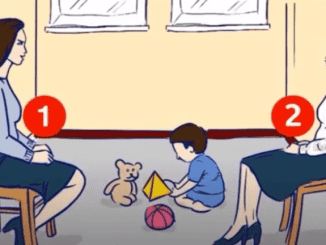Insect bites are an inevitable part of life, especially during warmer months when many bugs are most active. While some bites are harmless, others can cause discomfort or even transmit diseases. Being able to identify bug bites can help you respond appropriately and seek medical attention if needed.
Here’s a comprehensive guide to 10 common bug bites that anyone should be able to recognize.
1. Hornet Sting: Painful and Swollen

Hornet stings are among the most painful insect stings. When stung, the area becomes red, swollen, and may even blister. Hornets inject a potent venom that contains histamine and acetylcholine, causing a burning sensation worse than a bee or wasp sting. The larger size of hornets means they carry more venom, making their sting more toxic.
If you experience symptoms like blue lips, cold limbs, or breathing difficulties after a sting, seek medical attention immediately, as these could be signs of a severe allergic reaction.
2. Bee Sting: Sharp Pain and Itching
A bee sting results in red, swollen skin and causes sharp pain followed by an intense itch. Unlike other insects, bees leave their stinger behind, which continues to pump venom until removed. It’s important to carefully remove the stinger and monitor for any signs of allergic reaction, such as difficulty breathing or swelling beyond the sting site.
For non-allergic individuals, the discomfort usually subsides after a few hours, but allergic reactions can be life-threatening and require immediate medical care.
3. Wasp Sting: Persistent Pain and Itching
Wasp stings are very similar to bee stings but can be more severe because a wasp can sting multiple times. The sting site will become red, swollen, and painful, with burning and itching sensations following soon after. In some cases, wasp stings may also cause skin hemorrhage.
As with bee stings, it’s critical to determine if the person is allergic, as anaphylactic shock can occur, requiring emergency treatment.
4. Mosquito Bite: Itchy Red Bumps
Mosquito bites are easy to identify. They leave swollen red spots that itch intensely, often appearing on exposed areas of the body like arms and legs. Mosquitoes inject saliva containing anticoagulants to prevent blood clotting, causing your skin to react with redness and swelling.
Though most bites are harmless, mosquitoes can transmit diseases like malaria, dengue, and West Nile virus, so it’s essential to stay protected in areas where these diseases are prevalent.
5. Tick Bite: Slow-Growing Red Spot
A tick bite can be dangerous because ticks can carry diseases such as Lyme disease and Rocky Mountain spotted fever. The bite typically results in a red spot where the tick attaches itself to the skin. If left for an extended period, the tick grows larger as it feeds on blood.
If you develop a red spot that doesn’t fade or expands into a “bullseye” pattern, seek medical help as these can be signs of Lyme disease. Always check for ticks after spending time outdoors in wooded or grassy areas.
6. Flea Bite: Painful and Itchy Clusters
Flea bites appear as small red bumps that are extremely itchy and can often be mistaken for mosquito bites. However, flea bites are more painful and tend to occur in clusters around the legs or ankles. Fleas are notorious for biting multiple times, so the bites are usually spaced a short distance apart.
Fleas can transmit several serious diseases, such as plague and typhus, so it’s important to treat both the bites and any potential flea infestations.
7. Ant Bite: Burning and Pustules

Most ants are harmless, but red fire ants can deliver painful bites that result in pustules and intense itching. Fire ant venom contains toxins that cause burning pain, and in severe cases, may lead to allergic reactions or anaphylactic shock.
If bitten by a fire ant, it’s best to treat the area with antihistamines and monitor for any signs of an allergic reaction.
8. Cleg Bite: Painful and Itchy Spot

A cleg (horsefly) bite is unmistakably painful, leaving a small red spot that later swells and itches. These large flies drink blood and their bite is significantly more painful than that of a mosquito. Clegs are known for transmitting diseases like tularemia and anthrax, although human cases are rare.
If bitten, clean the area thoroughly and watch for signs of infection, as cleg bites can easily become irritated or inflamed.
9. Louse Bite: Tiny Red Dots in Hairy Areas
Lice bites result in small red dots, typically found where hair grows, such as on the scalp, neck, or pubic area. They cause intense itching and the affected area may resemble a rash. If red dots appear on other parts of your body like your back or arms, it could indicate body lice.
Lice can spread diseases like trench fever and typhus, making it important to treat an infestation promptly with medicated shampoos or lotions.
10. Bed Bug Bite: Rows of Red Bumps
Bed bug bites are usually small, red, swollen bumps that are very itchy and often appear in straight lines or clusters. Bed bugs typically bite at night, leaving “tracks” of bites on exposed areas such as arms, neck, or back. These bites can be more painful than mosquito bites and cause considerable discomfort.
To deal with bed bugs, it’s crucial to eradicate the infestation with professional pest control, as bed bugs are notoriously difficult to eliminate.
Conclusion: Recognizing and Responding to Bug Bites
Knowing how to identify common bug bites is essential for preventing complications and receiving proper treatment. Whether it’s a mosquito bite or a tick carrying Lyme disease, early recognition can help you respond appropriately and avoid further health issues.
Always take preventative measures such as wearing protective clothing, using insect repellent, and checking for ticks after outdoor activities. In the event of a severe allergic reaction to a bite or sting, seek immediate medical attention to ensure your safety.
Staying informed about the dangers of bug bites can keep you safe and healthy, especially during the warmer months when insects are most active.


